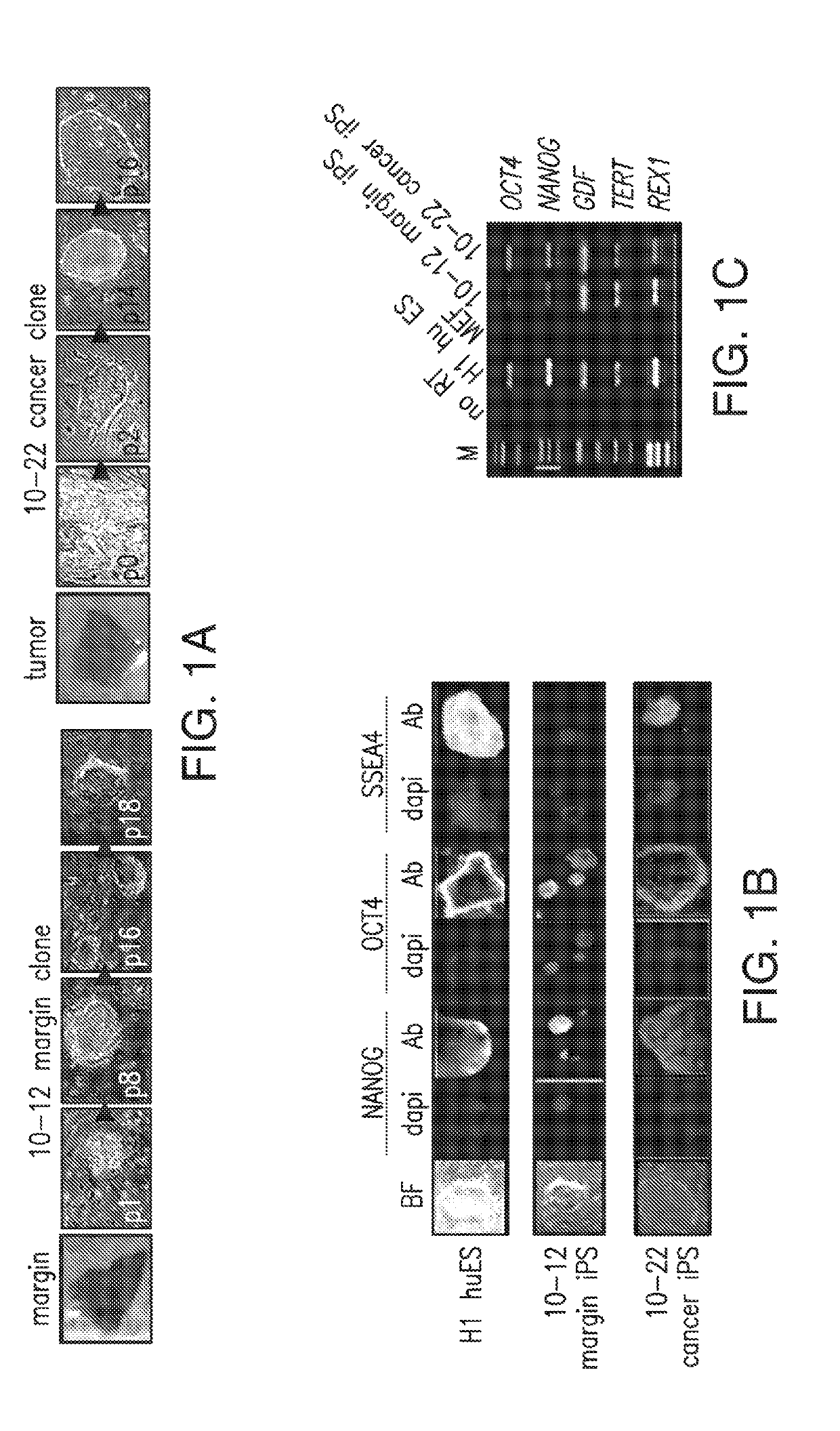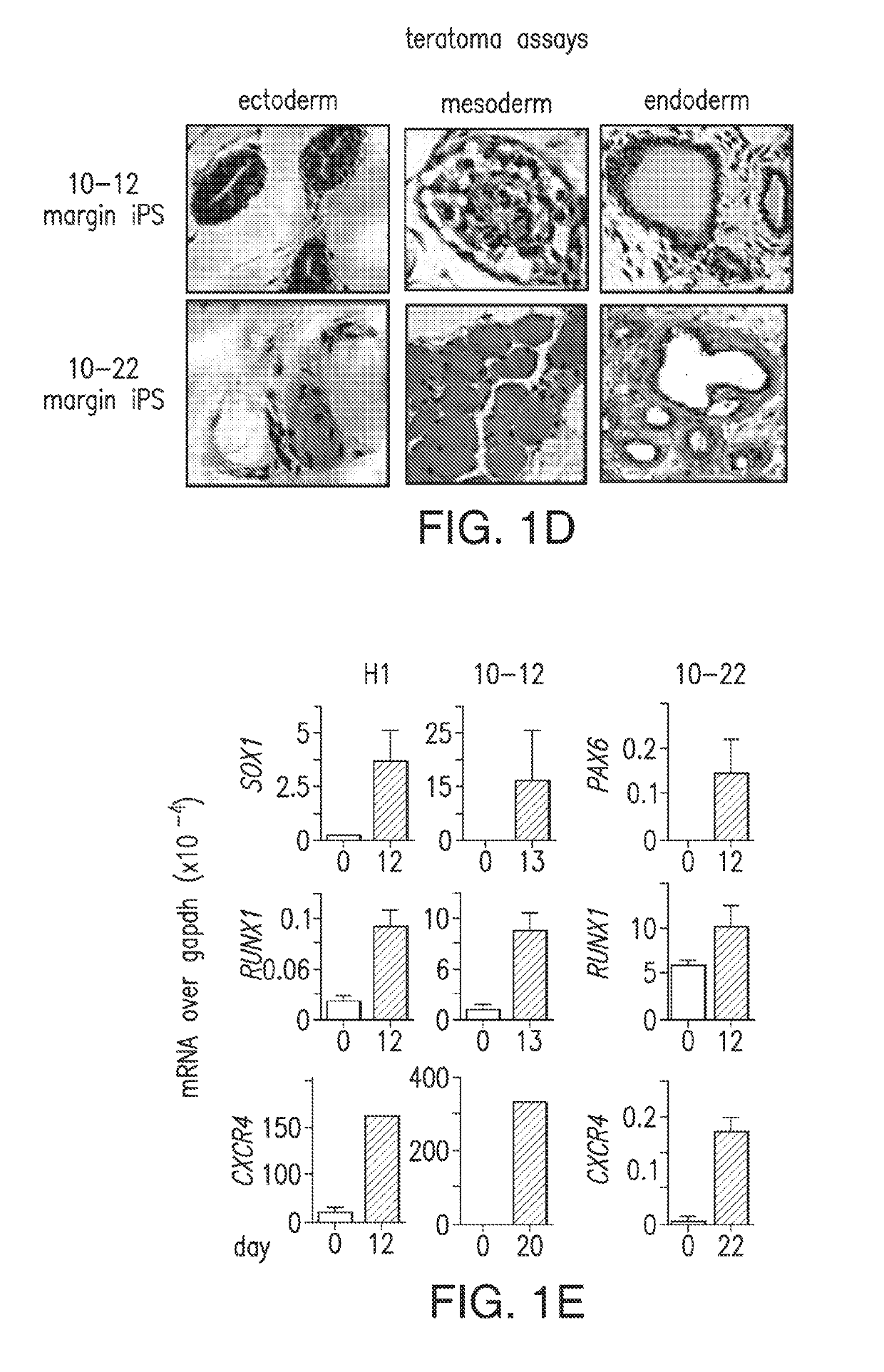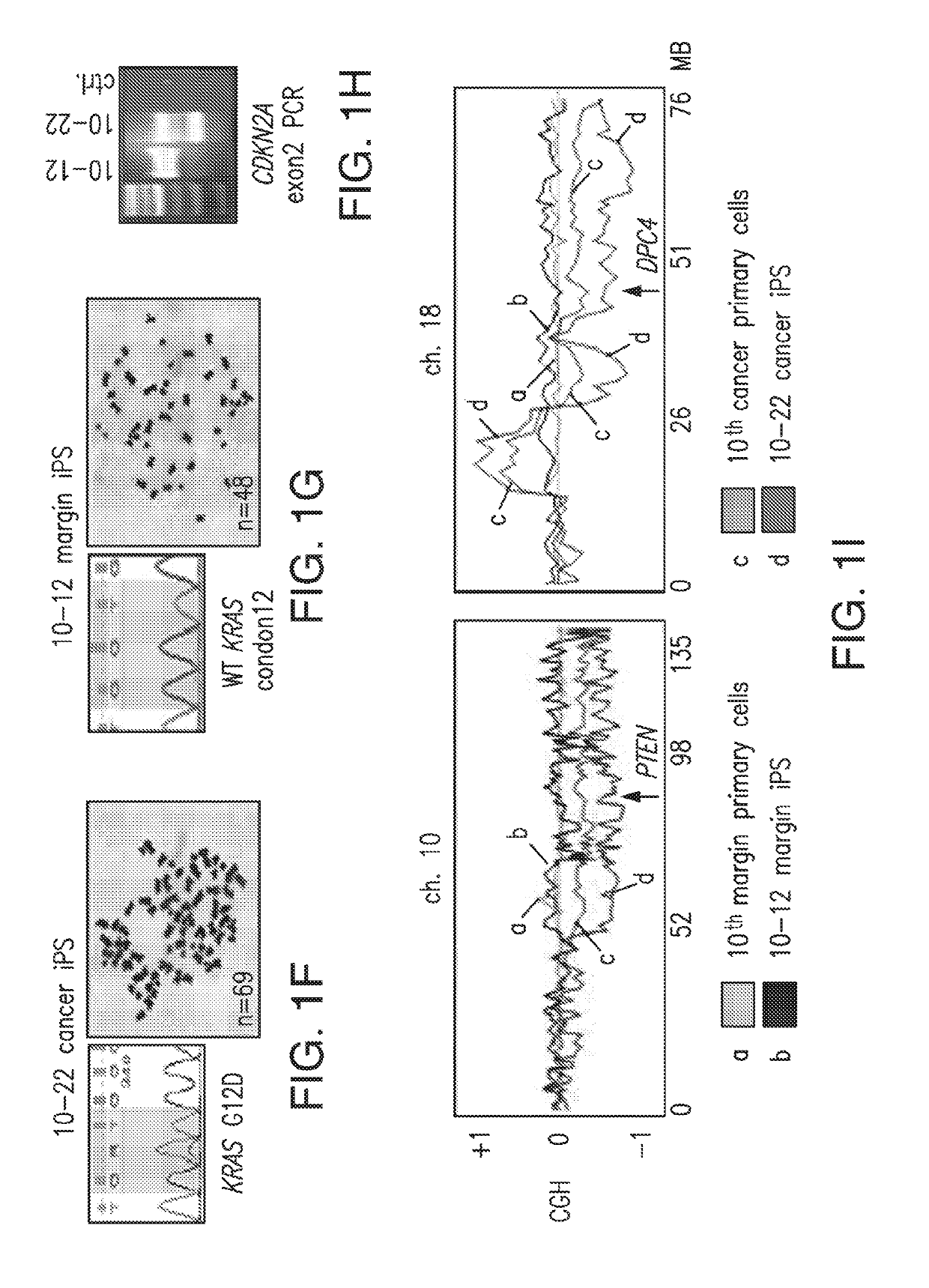Methods for diagnosing pancreatic cancer
- Summary
- Abstract
- Description
- Claims
- Application Information
AI Technical Summary
Benefits of technology
Problems solved by technology
Method used
Image
Examples
example 1
An iPS Cell Line from Human Pancreatic Ductal Adenocarcinoma Undergoes Early to Invasive Stages of Pancreatic Cancer Progression
MATERIALS AND METHODS
General Cell Culture
[0181]293T cells and human pancreatic ductal carcinoma cell lines PanC-1 and MIAPaCa-2 were maintained in 90% Dulbecco's modified essential medium (Invitrogen, Carlsbad, Calif.) supplemented with 10% FBS (Hyclone, Logan, Utah) and fed every other day. Irradiated mouse embryonic fibroblast (MEF) cells were purchased from R&D systems (Minneapolis, Minn.) and maintained in 85% DMEM (Invitrogen) supplemented with 15% FBS (Hyclone) on 0.1% gelatin (Millipore, Billerica, Mass.) pre-treated tissue culture dishes. Plated irradiated MEFs were used within 5 days.
H1 huES / human iPS Culture
[0182]H1 huES (Thomson et al., 1998) and iPS-like clones were maintained in 80% Dulbecco's modified essential medium (DMEM) / F12 supplemented with 20% KNOCKOUT serum replacement, 0.1 mM nonessential amino acids (Invitrogen), 0.1 mM -mercaptoetha...
example 2
Detection of Biomarkers in Subjects with Pancreatic Cancer by ELISA
[0218]In this Example, validation of the disclosed biomarkers for pancreatic cancer was performed in plasma samples of subjects that had pancreatic cancer using enzyme-linked immunosorbent assays (ELISA).
[0219]Validation of the disclosed biomarkers was performed by analyzing plasma samples of 10 patients with pancreatic cancer at various stages and analyzing plasma samples of 10 control subjects that did not have pancreatic cancer. Of the 10 subjects with pancreatic cancer, 7 had resectable and locally advanced cancer and 5 had resectable pancreatic cancer that was not as far advanced (Table 15).
[0220]Thirty three of the identified biomarkers described in Example 1, and one control, were analyzed in the plasma of the subjects by ELISA (Table 15). Human plasma samples were prepared from blood drawn from patients or controls by treating with EDTA or heparin as an anticoagulant. The mixture was centrifuged for 15 min at...
example 3
Detection of Biomarkers in Subjects with Pancreatic Cancer by Mass Spectrometry
[0223]In this Example, detection of the disclosed biomarkers for pancreatic cancer was performed in plasma samples of subjects that had pancreatic cancer using mass spectrometry.
[0224]Two control plasmas (M1, M2) and two metastatic PDAC case plasmas (M3, M4) were selected and coded to allow blind testing. Each plasma sample was subjected to a serum albumin removal gel (“pull-down”), and the superntants were collected. The supernatant of each plasma sample was subjected to a mixture of protein A beads and protein G beads to remove IgG, and adjusted with 6M Urea, 10 mM DTT and 50 mM IAA to block free sulfhydryl groups. The supernatants were subsequently treated with trypsin at 1:50 and subjected to a C18 cartridge desalting step. 30 μg were aliquoted from each supernatant sample for each LC-MS / MS run. pFind was used to analyze the data and to identify peptide IDs. The reverse peptide decoys were compared wi...
PUM
 Login to view more
Login to view more Abstract
Description
Claims
Application Information
 Login to view more
Login to view more - R&D Engineer
- R&D Manager
- IP Professional
- Industry Leading Data Capabilities
- Powerful AI technology
- Patent DNA Extraction
Browse by: Latest US Patents, China's latest patents, Technical Efficacy Thesaurus, Application Domain, Technology Topic.
© 2024 PatSnap. All rights reserved.Legal|Privacy policy|Modern Slavery Act Transparency Statement|Sitemap



